South America, a remarkable continent renowned for its remarkable biodiversity, boasts an array of diverse ecosystems like rainforests, grasslands, mountains, and deserts, which serve as habitats for an extensive range of species, many of which are exclusive to this region and cannot be found anywhere else on the planet.
The wildlife in South America encompasses an impressive assortment of creatures. Among the notable mammals are anteaters, tapirs, jaguars, maned wolves, howler monkeys, and spider monkeys. The reptilian inhabitants include caimans, anacondas, and iguanas. Amphibians add to the richness of the continent, with the presence of striking poison dart frogs and the captivating red-eyed tree frog. In the avian realm, South America boasts magnificent species such as the iconic harpy eagle, rheas, and vibrant macaws.
Within this very page, you will discover a compilation of these remarkable animals and many others that thrive in South America. Complete with captivating imagery, intriguing facts, and informative links, this resource provides a gateway to delve deeper into the world of each fascinating creature.
South American Animal Environments
South America boasts not only the renowned and immense Amazon Rainforest but also other significant rainforests like the Atlantic Rainforest and the lofty cloud forests found in the northwestern part of the continent.
Apart from these rainforests, South America encompasses diverse wildlife habitats such as the expansive Pantanal, a tropical wetland teeming with life, the Cerrado, a tropical savanna situated in Brazil, the Pampas, wide grasslands stretching across the southeast, the majestic Andes, a mountain range tracing the continent’s western edge, the arid Atacama Desert sheltered by the shadow of the Andes, and the captivating Galápagos Islands, situated off the coast of Ecuador.
Highlighted below are some of the remarkable animals found in these South American locations and beyond.
Continue scrolling to explore captivating images and intriguing information about an array of South American animals. Alternatively, utilize the convenient index below to swiftly navigate to your desired creature.
South American Animal
- Amazon River Dolphin
- Anaconda
- Anteater
- Argentine Horned Frog
- Blue Footed Booby
- Blue Morpho Butterfly
- Boa Constrictor
- Caiman
- Capybara
- Coatimundi (Coati)
- Giant Otter
- Goliath Birdeater
- Guanaco
- Harpy Eagle
- Hercules Beetle
- Howler Monkey
- Iguana
- Jaguar
- Llama
- Macaw
- Maned Wolf
- Piranha
- Poison Dart Frog
- Red Eyed Tree Frog
- Rhea
- Sloth
- Spectacled Bear
- Spider Monkey
- Tamarin
- Tapir
- Toucan
- Vicuña
Explore the Fascinating Creatures Spanning the Globe
- Intriguing Beings of Africa
- Majestic Residents of Antarctica
- Resilient Creatures of the Arctic
- Enchanting Fauna of Asia
- Distinctive Wildlife of Australia
- Captivating Species of Europe
- Diverse Fauna of North America
Amazon River Dolphin (Boto)

The Amazon River Dolphin, also known as the Boto or Pink River Dolphin, is a fascinating mammal that inhabits freshwater and brackish environments. Unlike their counterparts in Asia, the Amazon River dolphins are not closely related to them.
With its presence predominantly in the Amazon River and its tributaries, the Amazon River Dolphin holds the distinction of being the largest species among its kind. As these dolphins mature, their skin undergoes a remarkable transformation from gray to a vibrant pink hue, hence the alternate name “pink river dolphin.”
The Amazon River Dolphin shares close genetic ties with other river dolphin species such as the Bolivian, Orinoco, and Araguaian dolphins, all of which are found in South America. Some scientists even consider these dolphins to be subspecies of the Amazon River Dolphin rather than separate species in their own right.
Anaconda
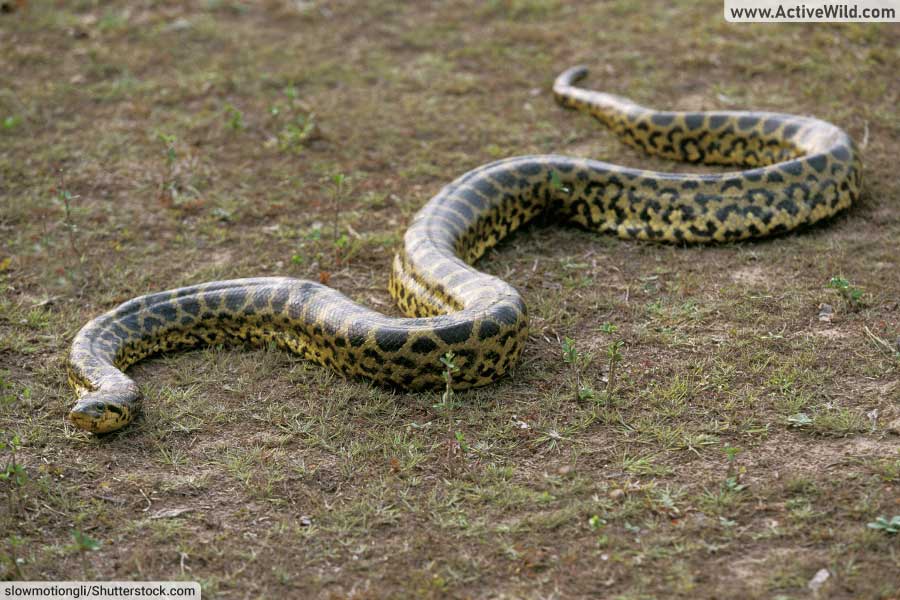
Reptiles of the Boidae family, specifically the genus Eunectes, encompass the fascinating anacondas. These remarkable creatures, native to South America, manifest in four distinct species. Alongside their relatives, the Boa constrictors, anacondas dominate the Boidae family.
The green anaconda holds the crown as the most colossal and renowned anaconda species, surpassing all other snakes in the world in terms of weight.
The remaining anaconda species include the yellow anaconda, prevalent in the Pantanal region to northern Argentina, the Bolivian anaconda, and the dark-spotted anaconda discovered in northeastern South America.
These four anacondas share common traits—they are sizable, non-venomous snakes with an exceptional ability to constrict their prey. They thrive in aquatic environments, adding to their distinctive allure.
Anteater
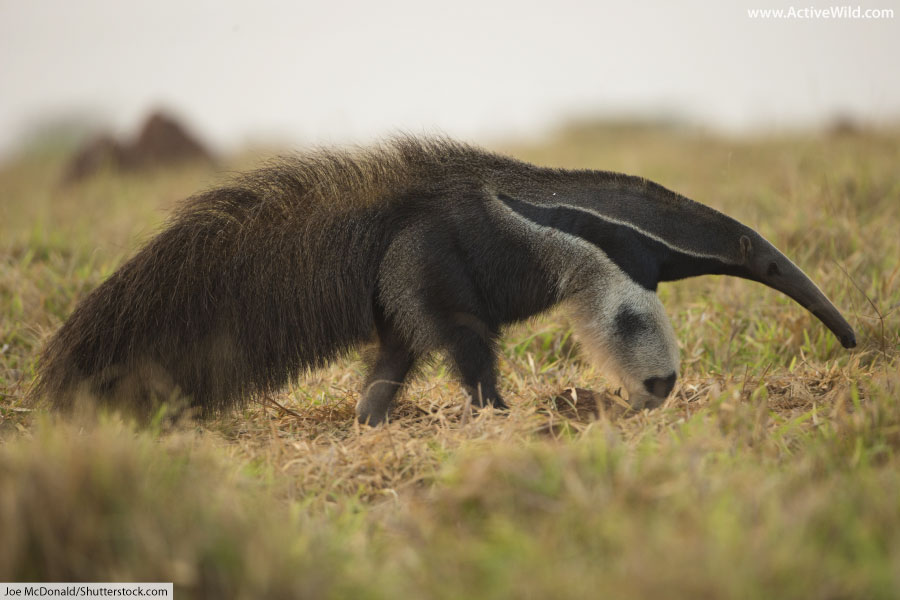
Anteaters are fascinating mammals belonging to the suborder Vermilingua. They can be categorized into four species: the giant anteater, silky anteater, northern tamandua, and southern tamandua. These incredible creatures are primarily found in South America, with the exception of the southern tamandua, which is also found in Central America.
Let’s explore each species along with their scientific names and conservation statuses:
- Giant anteater (Myrmecophaga tridactyla): This remarkable species is known for its size and is considered vulnerable in terms of conservation status.
- Silky anteater (Cyclopes didactylus): The silky anteater, characterized by its soft fur, is fortunate to have a conservation status of least concern.
- Northern tamandua (Tamandua mexicana): The northern tamandua is another species with a conservation status of least concern, denoting a relatively stable population.
- Southern tamandua (Tamandua tetradactyla): Similar to the northern tamandua, the southern tamandua is also classified as least concern.
As the name implies, anteaters primarily feed on small insects, particularly ants and termites. Their distinctive feature is their specialized, long, thin, and adhesive tongue, which they use to capture their insect prey.
The giant anteater, being the largest of the anteater species, prefers a terrestrial lifestyle, while the other three species are arboreal and dwell in trees. The arboreal anteaters possess prehensile tails, enabling them to grasp branches while climbing.
Anteaters belong to the superorder Xenarthra, which encompasses other fascinating creatures like sloths and armadillos.
Argentine Horned Frog
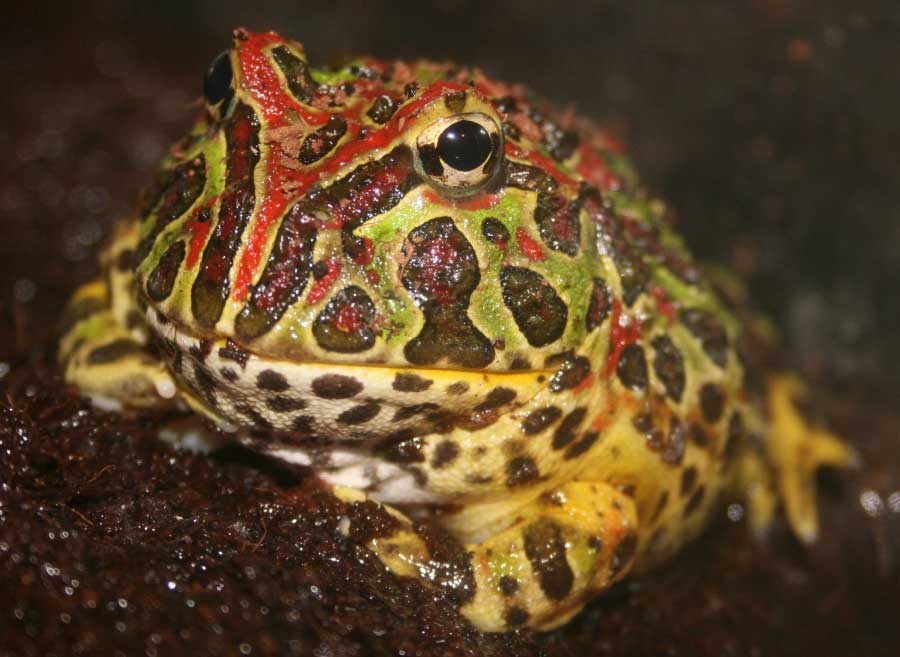
Amphibians come in various forms, and one captivating example is the Argentine horned frog, scientifically known as Ceratophrys ornata. This remarkable creature displays a distinctive appearance, adorned with vibrant hues and intricate patterns on its skin. It is further distinguished by the presence of horn-like projections above its eyes and a truly enormous mouth, constituting approximately half of its overall size.
Hailing from South America, this amphibian possesses an insatiable appetite, making it a formidable predator in its habitat. It readily consumes a wide array of prey, exhibiting a preference for anything that can fit into its colossal mouth, including mammals and fellow amphibians.
Due to its immense oral capacity and voracious feeding habits, this frog has earned the moniker “the ornate pacman frog,” an homage to its likeness to the renowned video game character known for devouring everything in its path.
Blue Footed Booby
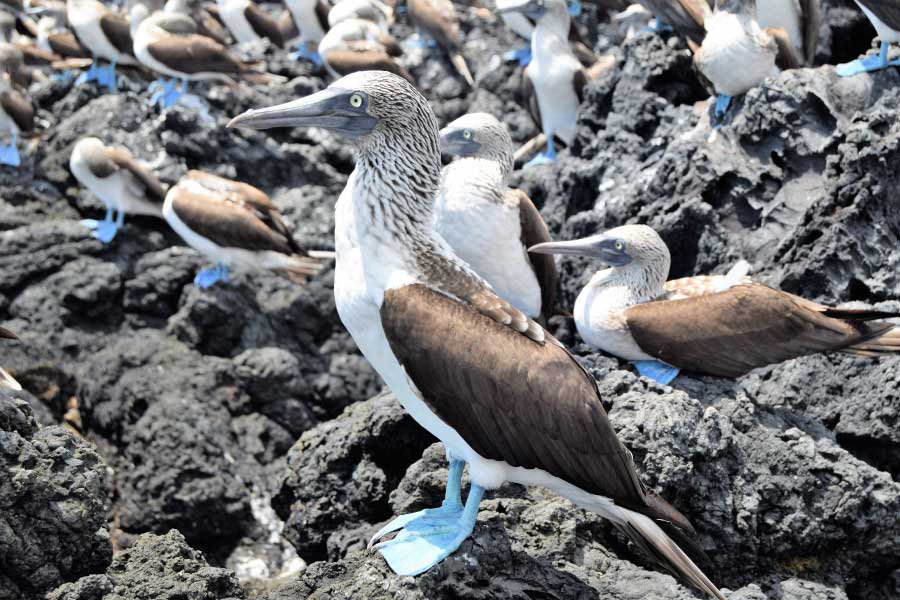
Bird lovers rejoice! Allow me to introduce you to a remarkable creature known as the blue-footed booby. This stunning seabird belongs to the Sulidae family and goes by the scientific name Sula nebouxii. Luckily, this species is currently classified as “Least Concern” in terms of conservation status.
These charismatic birds can be found along the Pacific coasts of South America and southern North America. However, a significant portion of the blue-footed boobies, approximately half of them, choose to breed on the famous Galápagos Islands. Situated in the Pacific Ocean off the coast of Ecuador, this archipelago serves as a nesting haven for these beautiful avian beings.
During the mating season, male blue-footed boobies flaunt their most striking feature—their vibrant blue feet. Employing a captivating courtship dance, they lift each foot in a rhythmic manner to catch the attention of potential mates. If a female is suitably impressed, she willingly joins in the dance, and the birds proceed to engage in the act of mating.
It’s interesting to note that the blue-footed booby is one of six different species of boobies, all belonging to the same genus, Sula. These boobies, along with their relatives, the gannets, form a part of the larger Sulidae family. So, in the vast avian world, these fascinating birds are in good company.
Blue Morpho Butterfly
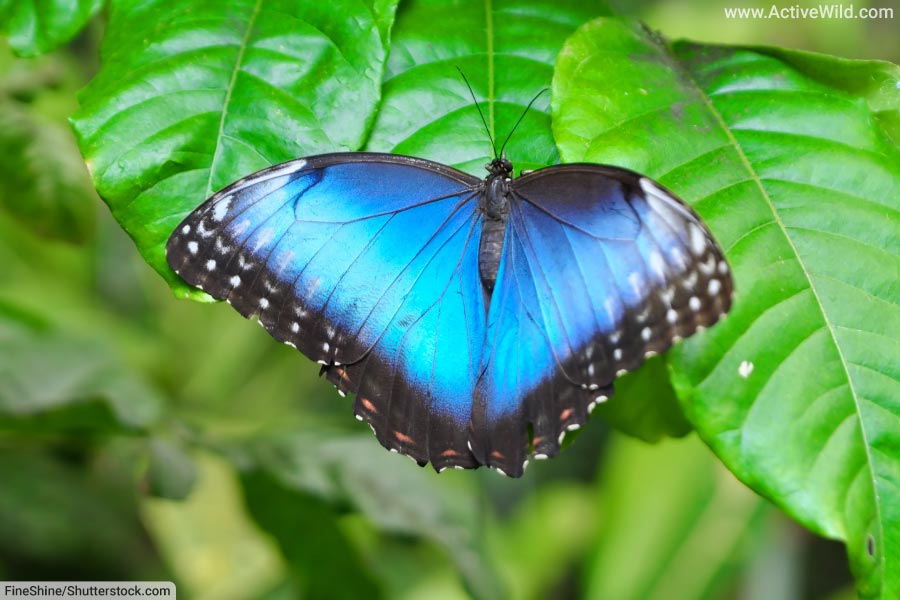
The blue morphos, a type of insect belonging to the Nymphalidae family, are magnificent butterflies that can be found in South America, as well as the southern regions of North America.
Within the genus Morpho, various butterfly species are recognized as “blue morphos.” One such species is the Menelaus blue morpho (Morpho menelaus), which inhabits Central and South America. It boasts an impressive wingspan of 12 cm and showcases shimmering, vibrant blue wings.
Boa Constrictor
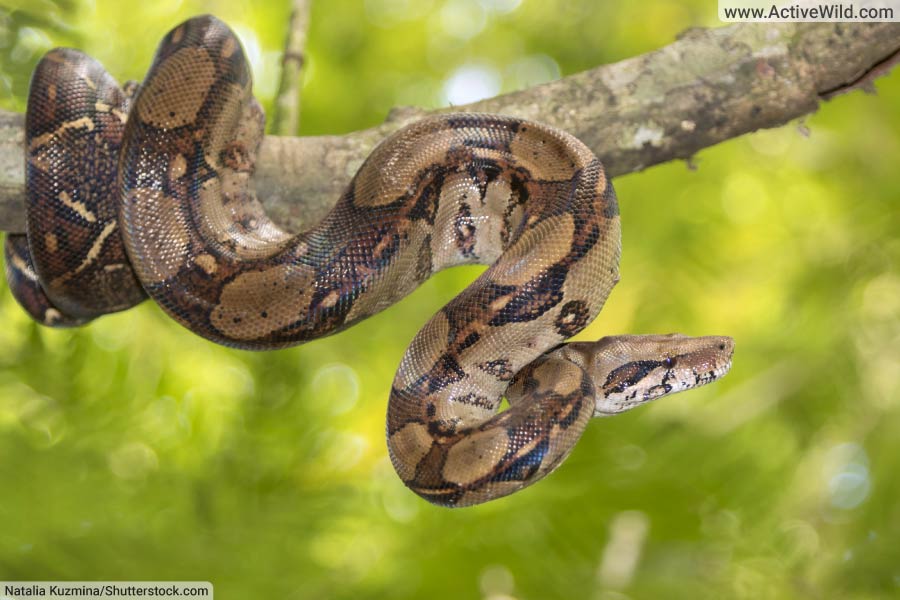
Reptiles of the Boidae family, known as boa constrictors, inhabit the regions of South and Central America, with an additional population introduced in Florida.
This particular species stands out as one of the few creatures widely recognized by its scientific name.
Boa constrictors, like other constrictors, lack venom and rely on their robust physique to subdue prey. They accomplish this by wrapping their bodies around the victim and applying pressure.
While young boa constrictors are primarily arboreal, spending significant time in trees, as they mature and grow in size, they gradually transition to spending more time on the forest floor.
Caiman
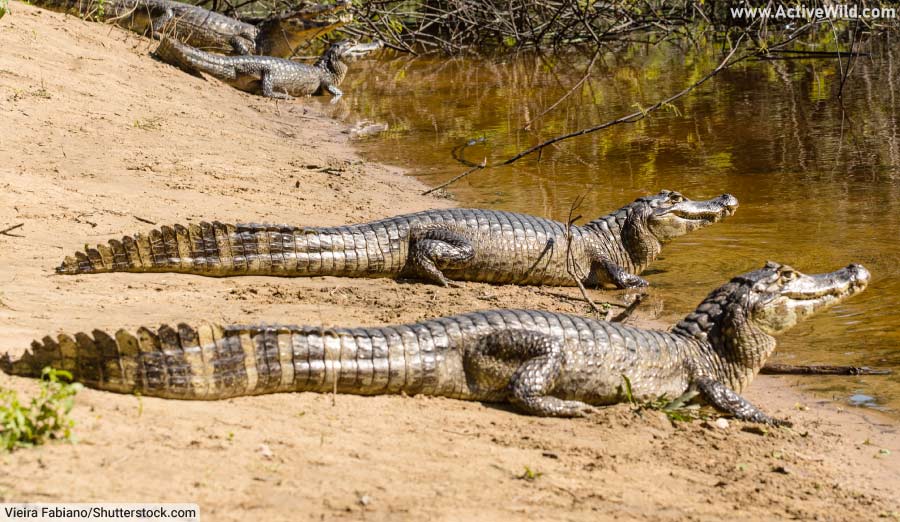
Reptiles known as caimans are part of the crocodilian family Alligatoridae. They belong to the subfamily Caimaninae and share this family with alligators.
Caimans come in six different species, varying in size. The smallest is the Cuvier’s dwarf caiman, measuring around 1.4 meters or 4.6 feet. On the other end of the spectrum, the black caiman takes the title as the largest member of the alligator family, reaching lengths of over 5 meters or 16 feet.
While the spectacled caiman, the most prevalent crocodilian, can be found from central South America to as far north as Mexico, the other caiman species are exclusive to South America.
Capybara
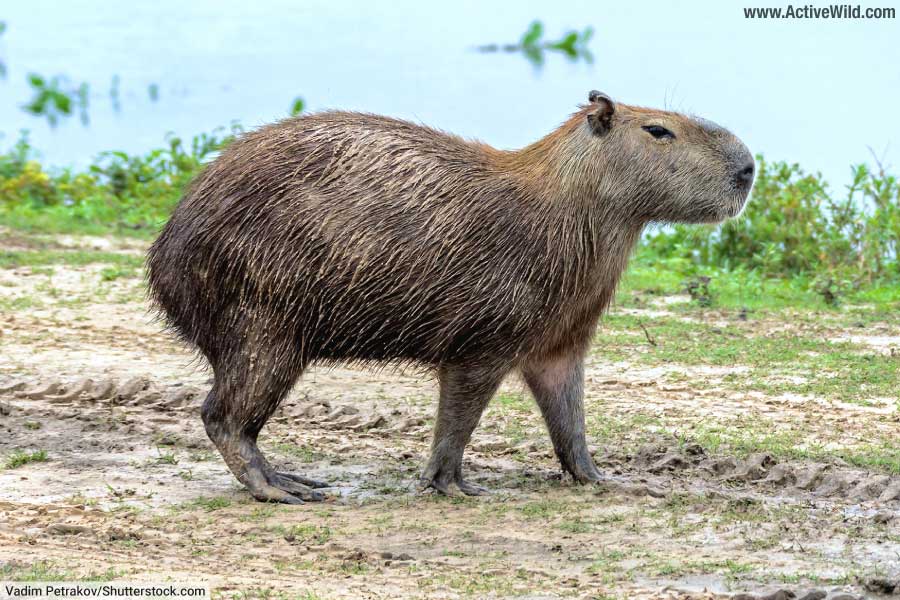
The capybara, scientifically known as Hydrochoerus hydrochaeris, is a remarkable mammal belonging to the Caviidae family. It holds the title of being the largest rodent in the world, reaching sizes comparable to that of a Labrador retriever.
This extraordinary creature, which dwells in freshwater environments, can be found across a significant portion of South America, encompassing all countries except Chile, and even extending into Central America. Notably, capybaras that have escaped captivity have been discovered in Florida.
Being semiaquatic in nature, the capybara is invariably found in close proximity to water. Its toes possess a slight webbing that facilitates swimming, and it demonstrates an impressive ability to remain submerged for up to five minutes.
Coatimundi (Coati)
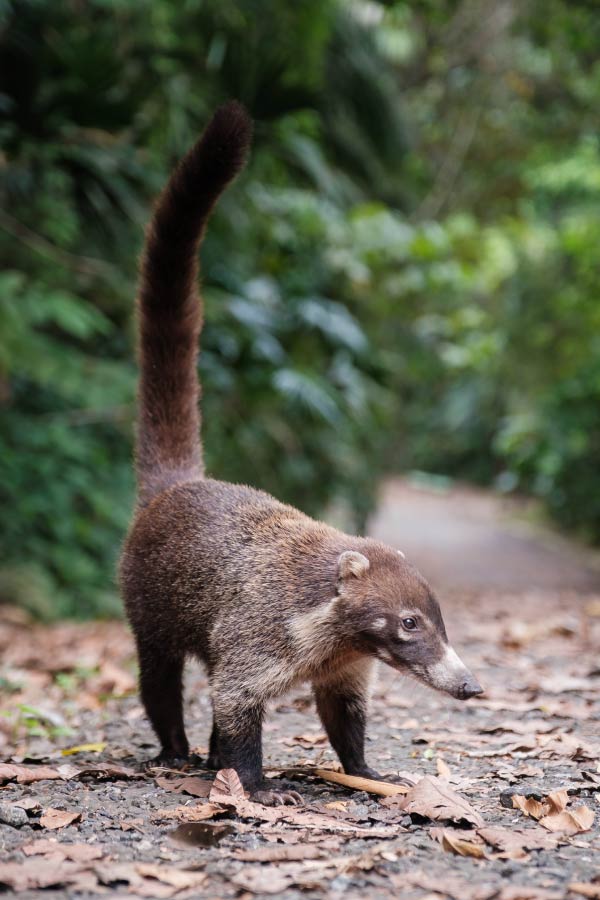 \
\
Coatis, also known as “coatis,” are medium-sized omnivorous mammals that belong to the raccoon family called Procyonidae. They have a cat-like size and are characterized by their distinctive behavior and appearance.
These fascinating creatures come in four different species: white-nosed, South American, eastern mountain, and western mountain coatis. They primarily inhabit South America, with the white-nosed coati even venturing as far north as the southern regions of the United States.
Coatis are active during the day, scouring the forest floor in search of food. With their keen sense of smell, they skillfully locate their meals amidst the fallen leaves and debris. When night falls, they retreat to the safety of the forest canopy to rest and sleep.
Giant Otter

This extraordinary creature, known as the giant otter, is a remarkable mammal belonging to the Mustelidae family. Scientifically named Pteronura brasiliensis, it can be found dwelling in the lush rainforests of South America. Among its otter relatives, it stands out as both the largest otter and the largest member of the weasel family.
With a semi-aquatic lifestyle shared by all otters, the giant otter predominantly feeds on fish, a vital part of its diet. Its habitat encompasses the Amazon River, along with its tributaries, as well as the remarkable Pantanal region.
Unfortunately, the giant otter faces numerous threats that have pushed it to the brink of endangerment. Habitat loss and excessive hunting have drastically reduced its population, leaving it confined to a mere one-fifth of its original range.
Goliath Birdeater
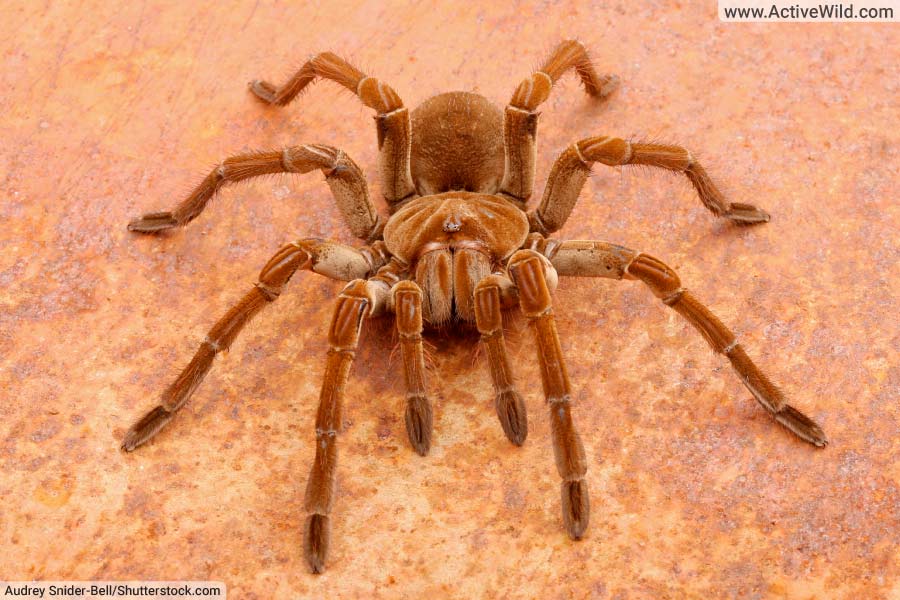
This remarkable creature belongs to the arachnid family known as Theraphosidae and goes by the scientific name of Theraphosa blondi. It holds the title for being the world’s largest spider, both in terms of weight and length. However, when it comes to leg span, the giant huntsman spider, Heteropoda maxima, takes the lead.
The Goliath Birdeater dwells in the lush rainforests of South America, showcasing its impressive presence. Despite its formidable name, this spider seldom feasts on birds.
Instead, it prefers to hunt earthworms and toads, though it isn’t hesitant to devour various other small creatures as well. While its bite carries venom, it poses little threat to humans.
Guanaco
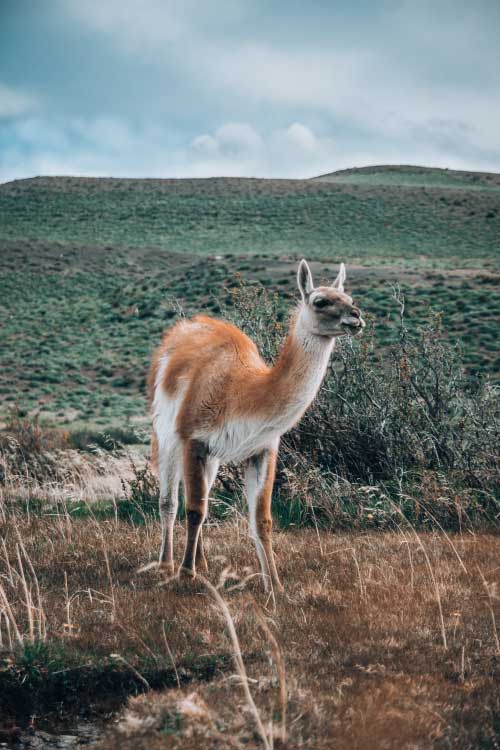
Mammals belonging to the Camelidae family, commonly known as camels, are often associated with the deserts of North Africa and the Middle East. However, South America is home to four out of the seven members of this camel family.
The four South American camelids are as follows:
- Llama (Lama glama)
- Alpaca (Vicugna pacos)
- Guanaco (Lama guanicoe)
- Vicuña (Vicugna vicugna)
While llamas and alpacas have been domesticated for many centuries, guanacos and vicuñas remain wild animals.
Guanacos reside in small herds in Patagonia and the Andean plateau region of west-central South America. They are believed to be the ancestors of the closely-related llama.
Harpy Eagle
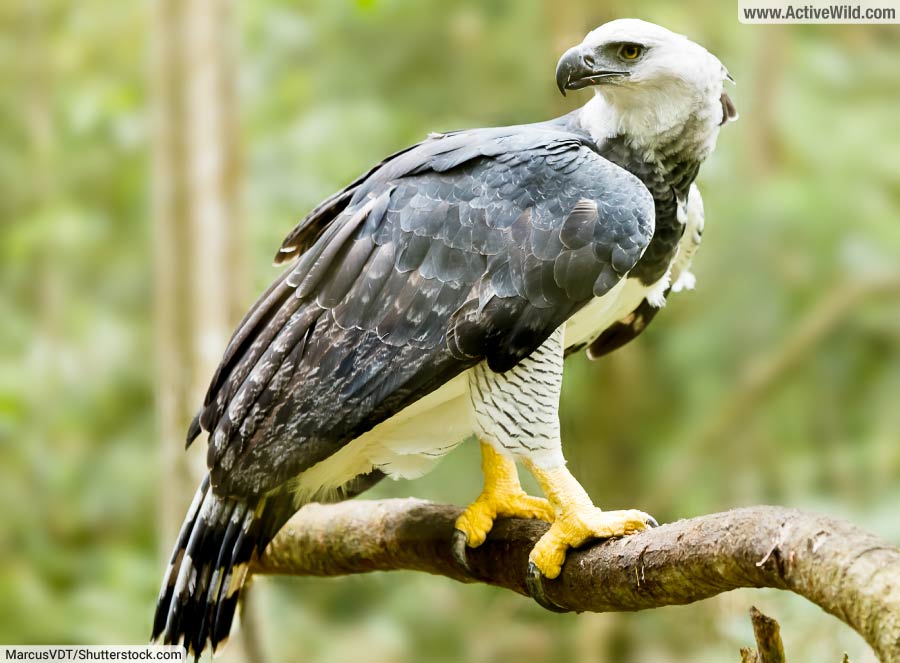
This remarkable creature belongs to the bird family known as Accipitridae. Its scientific name is Harpia harpyja, and it holds the conservation status of being Near Threatened. The harpy eagle stands out as one of the heaviest eagles globally, despite having a comparatively smaller wingspan compared to other large eagles. This unique characteristic allows it to navigate swiftly through dense forest environments.
The weight of the largest harpy eagles can reach an impressive 9 kg (19.84 lb). Similar to many raptors, the female of this species surpasses the male in size.
Regarded as the most formidable bird of prey on Earth, the harpy eagle possesses exceptional strength. It possesses the astonishing ability to snatch medium-sized mammals like monkeys and sloths directly from the branches of trees.
Hercules Beetle
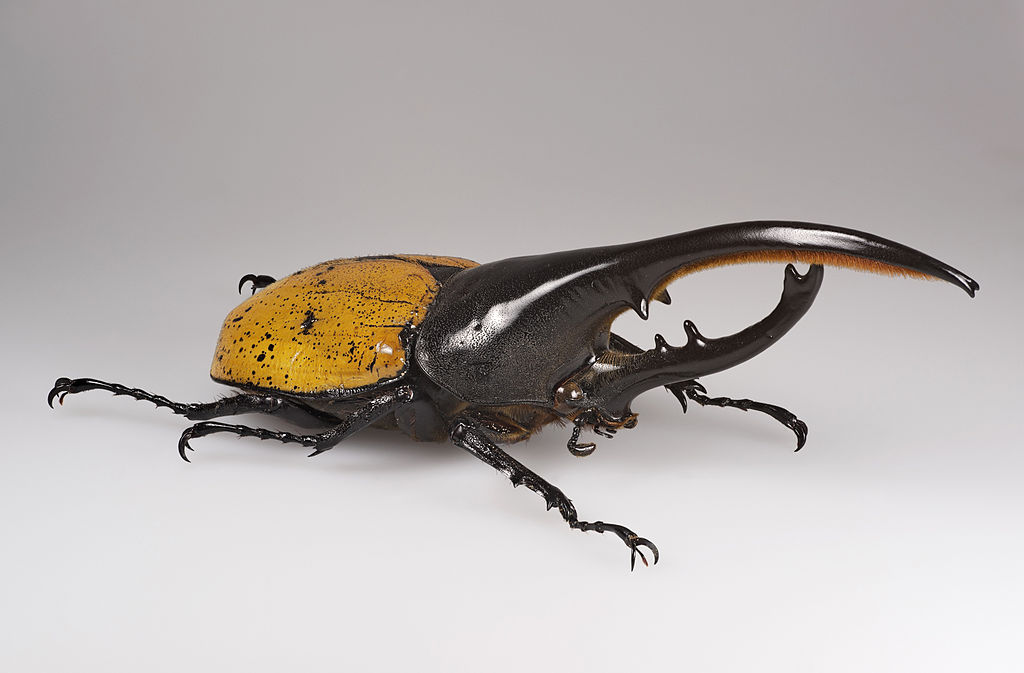
The Hercules Beetle, scientifically known as Dynastes hercules, is an intriguing insect belonging to the Scarabaeidae family. With its impressive length of up to 7 inches or 17.78 centimeters, including a remarkable elongated horn, it holds the title of being the longest beetle on Earth. This magnificent creature resides in the rainforests spanning from Bolivia to Mexico, bringing a touch of awe to its natural habitat.
It’s worth noting that the elongated horn is exclusive to male Hercules beetles. These horned gentlemen utilize this distinctive feature to engage in battles, vying for the opportunity to mate with the females and secure their reproductive rights. As for its conservation status, it remains unassessed, emphasizing the need for further research and understanding of this extraordinary species.
Howler Monkey
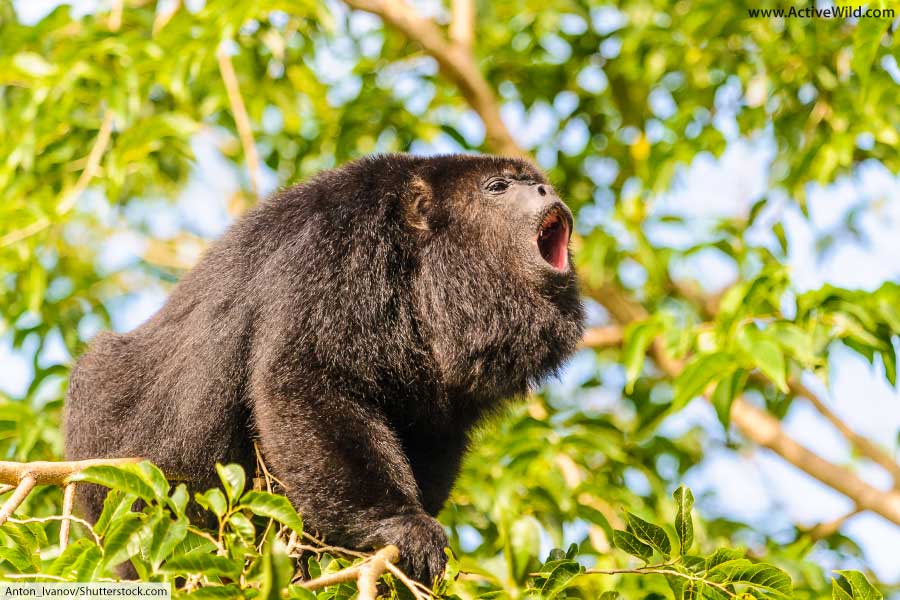
Howler monkeys, a type of mammal belonging to the genus Alouatta in the family Atelidae, are known for their distinct characteristics. With a total of fifteen species, they share the family Atelidae with other fascinating primates such as spider monkeys, woolly monkeys, and woolly spider monkeys.
These remarkable creatures utilize their powerful vocalizations, often referred to as “howls,” to communicate and make their presence known to other groups of howler monkeys. By announcing their existence through these loud calls, they effectively reduce the likelihood of conflicts and confrontations between different troops.
The prime time to encounter the resonating calls of howler monkeys is during the break of dawn. Their vocalizations are so robust that they can carry for impressive distances, reaching up to 5 kilometers or approximately 3.11 miles away, allowing their communication to be heard by distant ears.
Iguana (Green)
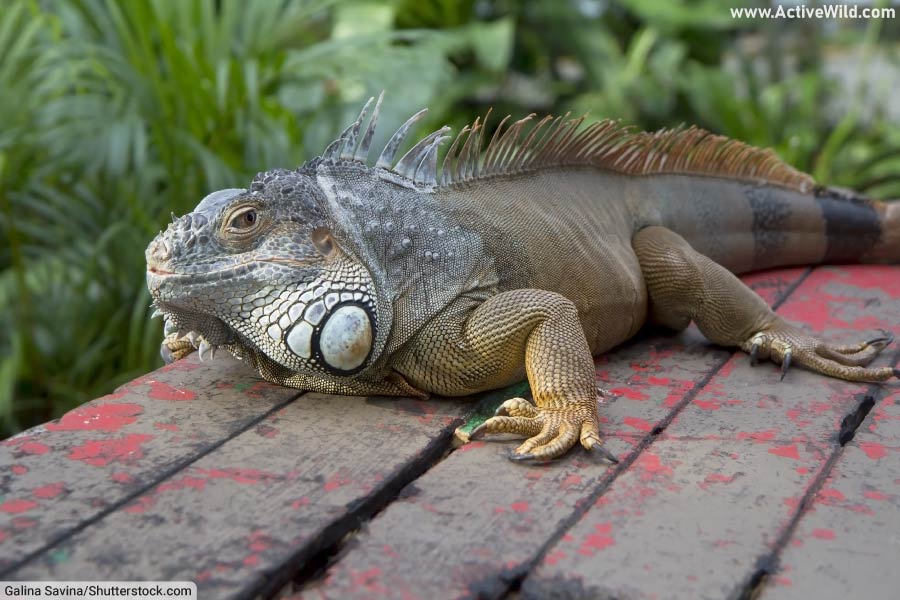
In the realm of reptiles, there exists a remarkable creature known as the green iguana. Belonging to the Iguanidae family and bearing the scientific name Iguana iguana, this magnificent lizard roams the lush forests of Central and South America. While it is commonly referred to as the iguana, its complete name serves the purpose of distinguishing it from other members of the iguana family.
The green iguana shares a close kinship with the critically endangered Lesser Antillean iguana, a species inhabiting the enchanting Lesser Antilles islands nestled in the Caribbean.
Despite its awe-inspiring stature, capable of exceeding lengths of 2 meters or 6.56 feet, the green iguana possesses a predominantly herbivorous diet. This means that despite its intimidating appearance, this reptile prefers to munch on plants and vegetation.
Noteworthy for its arboreal nature, the green iguana thrives in tree-dwelling habitats. Additionally, it possesses remarkable swimming abilities, making it a proficient navigator of aquatic environments. When faced with a threat, the green iguana is known to swiftly take the plunge into nearby bodies of water as a defensive maneuver.
Overall, the green iguana stands as a captivating representative of the reptilian world. Its grandeur, remarkable dietary preferences, and versatile habitats make it a creature of great intrigue and wonder.
Jaguar

The jaguar holds its place as the third-largest member of the Felidae family, surpassed in size only by the tiger and the lion.
This impressive feline inhabits the lush forests of Central and South America, asserting its dominance as the apex predator in its ecosystem. On rare occasions, sightings of this species have been reported in the southern regions of the United States.
Belonging to the Panthera genus, the jaguar shares its classification with other formidable big cats. While the term “big cat” sometimes encompasses the cheetah and cougar, which fall outside the Panthera genus, the jaguar remains a true member.
Recognized as a keystone species, the jaguar holds vital importance in maintaining the delicate balance of its ecosystem. Without the presence of these apex predators, the ecological harmony would be disrupted, leading to potential ecosystem failure.
By regulating the population of its prey species, the jaguar fulfills its significant role as an apex predator in its environment.
Llama
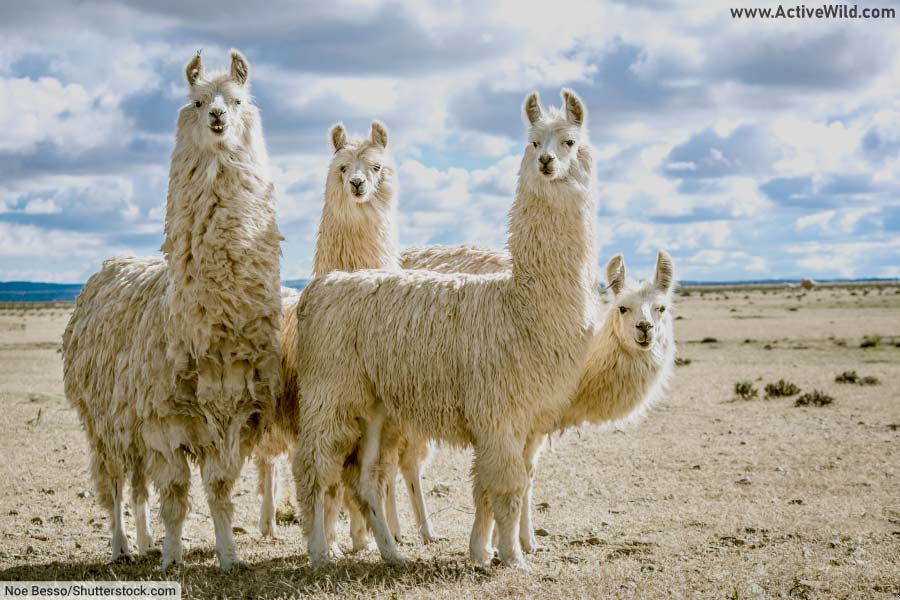
The llama, belonging to the Camelidae family, is a domesticated mammal. Its lineage can be traced back to the guanaco and vicuña, wild camelids.
Llamas have been domesticated for more than a millennium in South America, primarily by the Incas. They have served as valuable pack animals and have been raised for their meat and wool.
Macaw
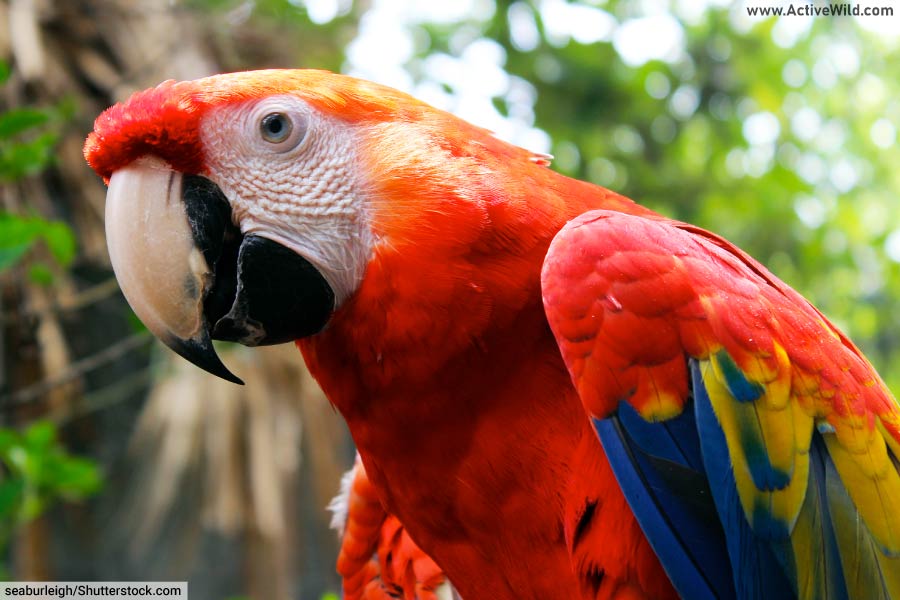
Birds known as macaws belong to the Psittaciformes order and the Psittacidae family. These unique parrots possess notable features such as large beaks, long tails, and faces devoid of feathers (although they display a charming blush when excited). Central and South America are the natural habitats of these vibrant avian creatures, with a total of 17 distinct macaw species currently in existence.
Macaws have gained popularity as pets due to their striking colors, curious personalities, and remarkable ability to imitate human speech. Unfortunately, the high demand for these birds has resulted in a significant decline in their wild populations, as they frequently fall victim to the illegal pet trade.
These social birds exhibit monogamous behavior, forming lifelong pairs. Interestingly, macaws do not exhibit noticeable physical differences between males and females, which is somewhat unusual among brightly-colored bird species.
Primarily herbivorous, macaws consume various flowers, fruits, seeds, and nuts. Their robust beaks are well-suited for cracking open tough plant materials. However, macaws are opportunistic eaters and will not hesitate to consume eggs, small lizards, or insects when presented with the opportunity.
Maned Wolf
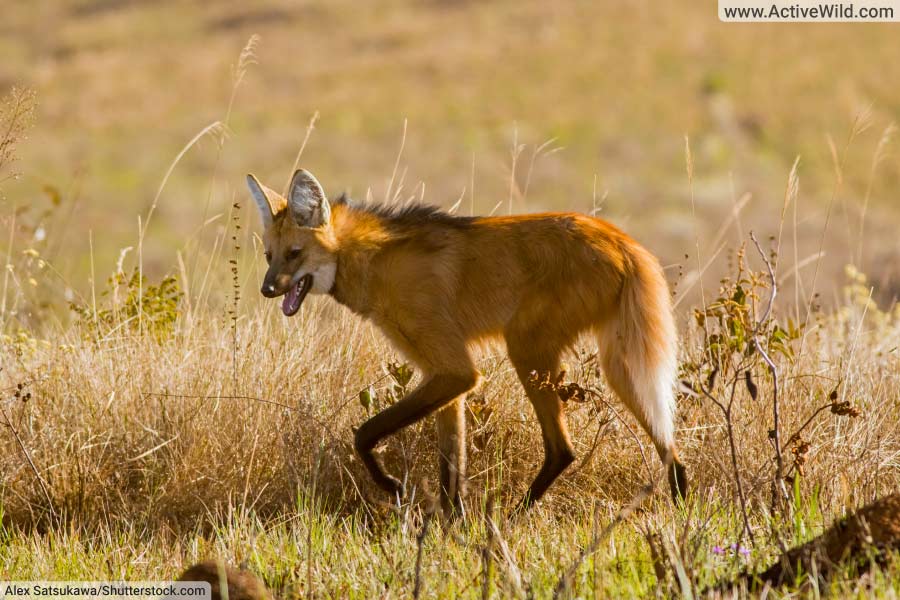
The maned wolf, scientifically known as Chrysocyon brachyurus, is a mammal belonging to the Canidae family, which includes dogs. It inhabits the grasslands of central South America and holds the title of being the largest canid in the continent, as well as the tallest among all wild dogs.
With its unique features, such as a shaggy red-brown fur, long legs, and large ears, this remarkable species stands out in its environment.
Piranha
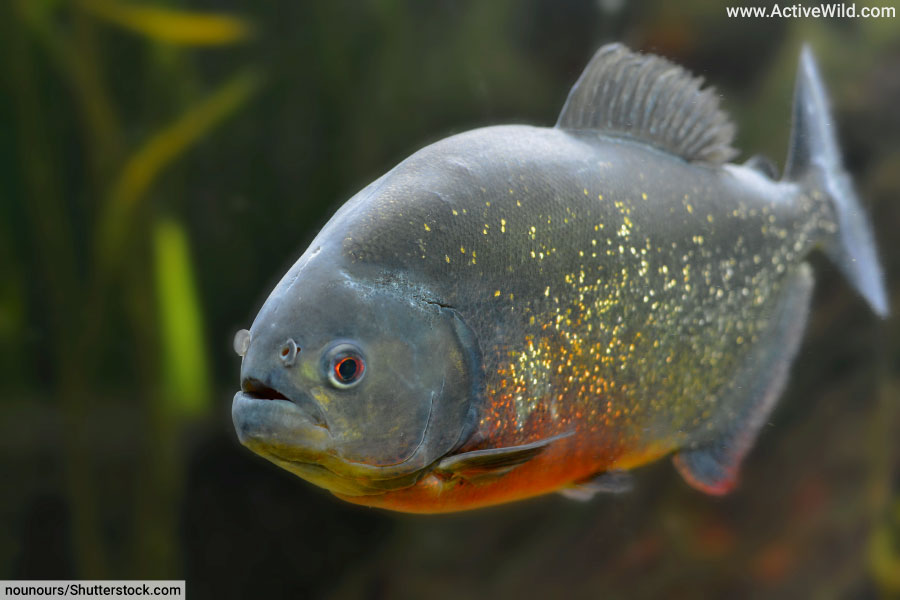
With their impressive set of teeth and formidable jaws, piranhas have gained a notorious reputation as fearsome hunters. However, this portrayal is somewhat misleading. While piranhas are indeed capable predators, most of them are omnivorous and often find themselves on the receiving end of other freshwater creatures’ meals, such as caimans.
Although there have been occasional instances of piranha attacks on humans, the outcomes are typically limited to minor cuts on the hands or feet.
Poison Dart Frog
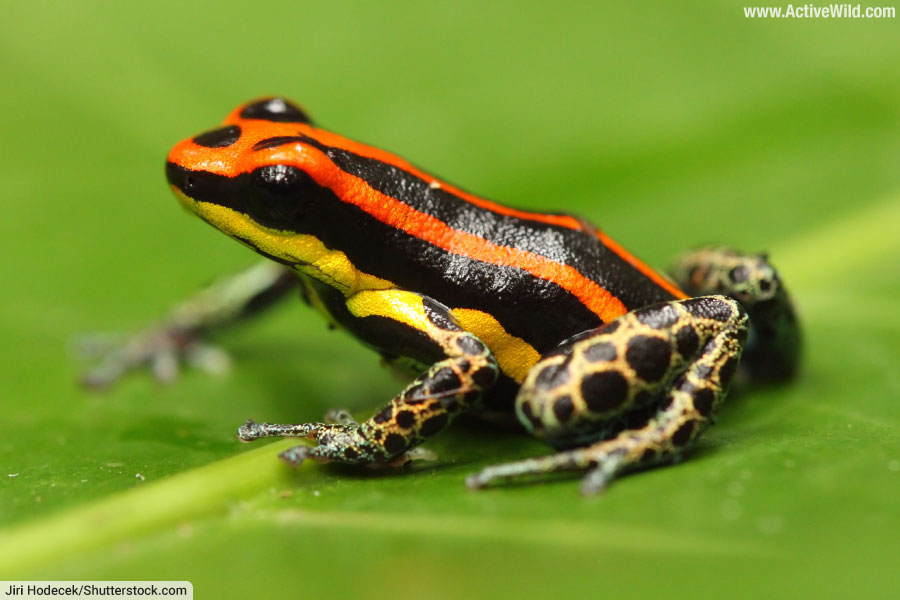
The poison dart frog, an amphibian belonging to the family Dendrobatidae, is widely recognized as one of the most famous amphibians in South America. With numerous species falling under this family, these frogs are exclusively found in Central and South America.
These frogs earned their name due to the potent toxins produced by glands in their skin. In the past, native hunters would coat their darts with these poisons, enhancing the lethality of their weapons.
A notable characteristic of poison dart frogs is their vibrant and colorful skin, which serves as a warning to potential predators about their toxicity. This adaptation is known as Aposematism.
Among these frogs, the golden poison frog (Phyllobates terribilis) stands out as one of the most poisonous creatures on Earth. Just a single golden poison frog possesses enough poison to fatally harm up to 20 individuals!
Red-Eyed Tree Frog
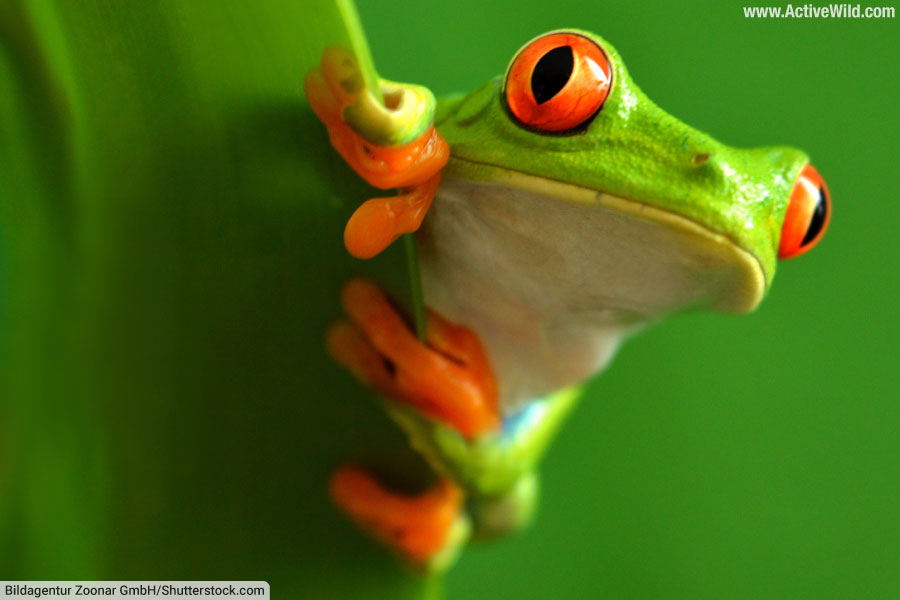
The red-eyed tree frog, known for its vivid appearance, inhabits the lush rainforests spanning from southern Mexico to Columbia. This remarkable amphibian thrives in the upper layers of the rainforest, where it finds safety and concealment.
Its vibrant green hue serves as a form of camouflage, effectively blending with the foliage. In moments of danger, when faced with a potential predator, the frog employs a remarkable defense mechanism.
It suddenly reveals its striking red eyes, while showcasing its orange feet and captivating blue stripes. This startling display aims to deter and intimidate its would-be attacker.
Rhea
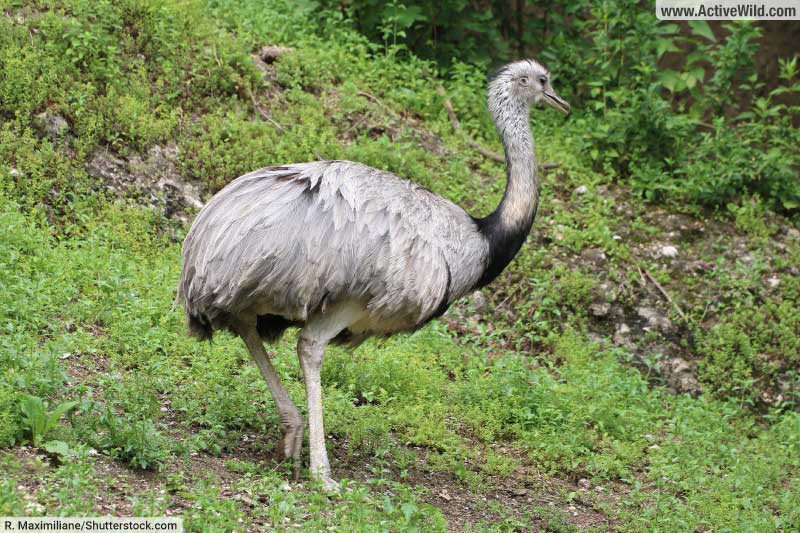
Birds of the Rheidae family, known as rheas, come in two distinct species: the greater rhea (Rhea americana) and the lesser rhea (Rhea pennataI). The greater rhea, the largest bird in the Americas, weighs up to 40 kg (88 lb.) and measures around 1.34 m (4.4 ft.) in body length.
Although it is smaller in weight compared to the emperor penguin, it holds the seventh position among the world’s heaviest birds. These flightless birds are native to the grasslands and pampas of South America.
In addition to the greater and lesser rheas, some sources recognize a third species known as the Puna rhea (Rhea tarapacensis).
Rheas have been observed forming mixed herds with deer and guanacos, which is believed to enhance their chances of survival.
Sloth
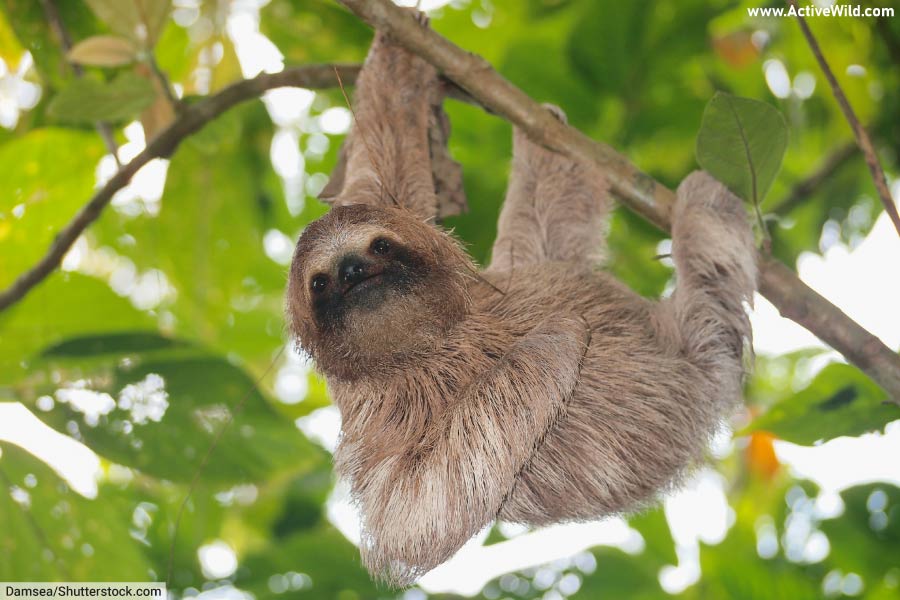
Mammals belonging to the suborder Folivora, sloths are well-known inhabitants of South America, with some species also found in Central America. These creatures, adapted for an arboreal lifestyle, are famous for their peculiar behavior of hanging upside-down from tree branches and their incredibly slow movements.
Among the six existing sloth species, four are known as “three-toed sloths,” belonging to the Bradypodidae family and Bradypus genus. The remaining two species are referred to as “two-toed sloths,” belonging to the Choloepodidae family and Choloepus genus.
The distinction between three-toed and two-toed sloths lies in the number of toes on their forelimbs. Three-toed sloths possess three toes on their forelimbs, while two-toed sloths have two toes. However, all sloths have three toes on their hind limbs.
The brown-throated sloth, a three-toed sloth species, is the most prevalent among the six extant sloth species. It can be found in Central and South America. Remarkably, this species spends around 15 to 18 hours per day sleeping and only descends from the forest canopy once a week to defecate.
Spectacled Bear
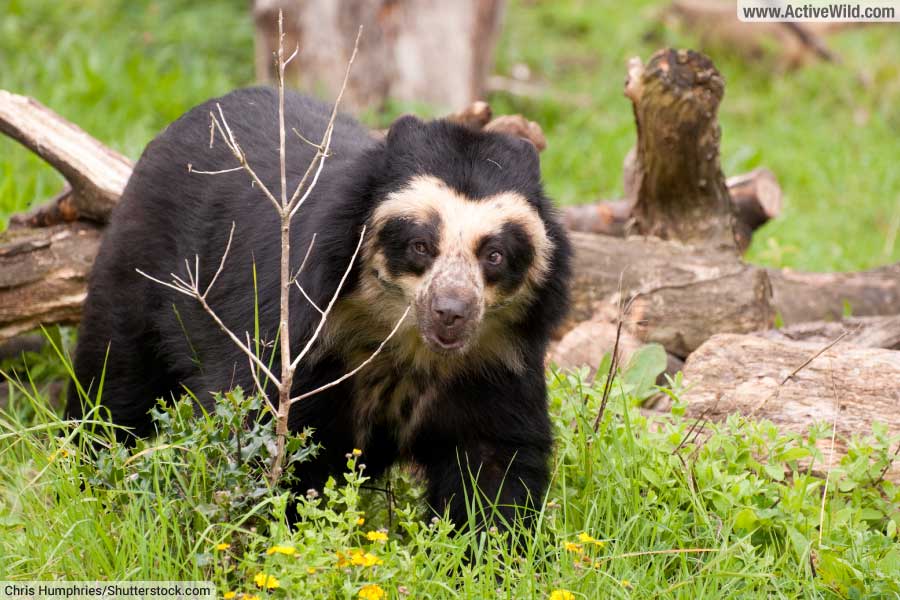
The spectacled bear stands as the sole bear species inhabiting South America, and it dwells further south than any other bear. It holds a unique position as the solitary living member of the bear subfamily Tremarctinae, which encompasses ancient and formidable creatures like the giant short-faced bear, recognized as one of the largest terrestrial carnivores to have ever existed.
This remarkable bear earns its name from the distinctive facial markings resembling spectacles, forming a cross-like pattern around its eyes. However, it’s important to note that not all individuals possess these pale orange-colored markings.
While meat constitutes only a small portion, around 10%, of the spectacled bear’s diet, it exhibits partial predatory behavior, granting it the status of South America’s largest land carnivore.
The spectacled bear inhabits the Andes mountain range in South America, stretching from Venezuela to Bolivia.
Spider Monkey
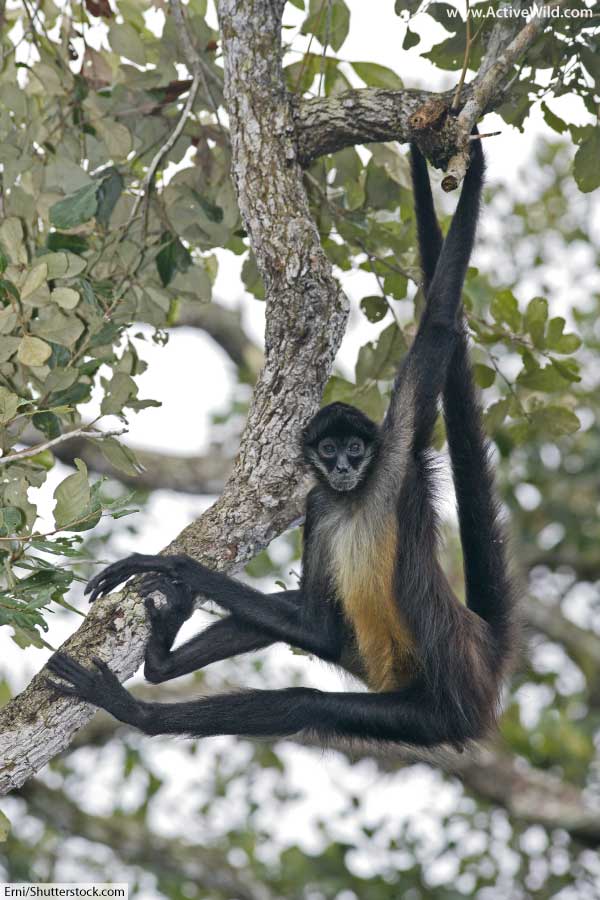
Spider monkeys are a fascinating group of monkeys found in Central and South America, known for their distinctive long limbs and tails that resemble those of spiders.
Within the genus Ateles, there exist seven species of spider monkeys, each with its own unique characteristics and conservation status.
Here is a list of the names and conservation statuses of these seven spider monkey species:
- White-bellied Spider Monkey (Ateles belzebuth) – Endangered
- Peruvian spider monkey / Black-faced Black Spider Monkey (Ateles chamek) – Endangered
- Brown-headed Spider Monkey (Ateles fusciceps) – Endangered
- Geoffroy’s Spider Monkey (Ateles geoffroyi) – Endangered
- Brown Spider Monkey / Variegated Spider Monkey (Ateles hybridus) – Critically Endangered
- White-cheeked Spider Monkey (Ateles marginatus) – Endangered
- Red-faced spider monkey / Guiana Spider Monkey (Ateles paniscus) – Vulnerable
The spider monkey species face significant threats, including hunting by local communities for their meat and the destructive effects of deforestation.
Spider monkeys belong to the Atelidae family, which is a group of New World monkeys that also includes howler monkeys, woolly monkeys, and woolly spider monkeys. The Atelidae family, in total, comprises 29 different species.
Spider monkeys primarily inhabit pristine rainforest areas in Central and South America, where their natural habitat remains undisturbed.
Tamarin
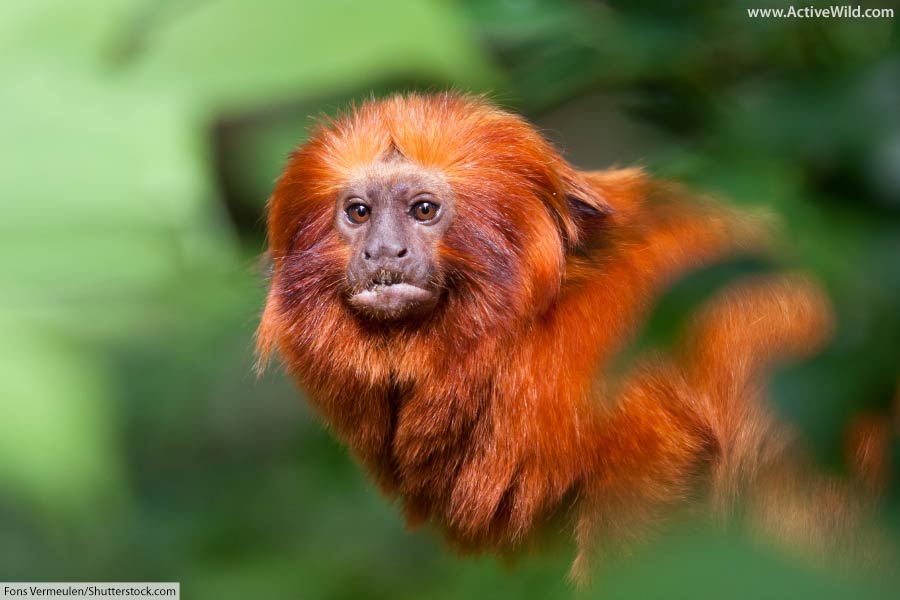
At present, there are 22 recognized species of tamarin. These diminutive primates inhabit the treetops of Central and South America’s tropical rainforests, with a significant number of species residing in the Amazon Rainforest.
Prominent tamarin species include the golden lion tamarin, distinguished by its stunning golden fur, and the emperor tamarin, characterized by its large white mustache.
Tamarins form social groups ranging from 3 to 40 individuals. They are known to display both selfless and antagonistic behaviors.
Tapir
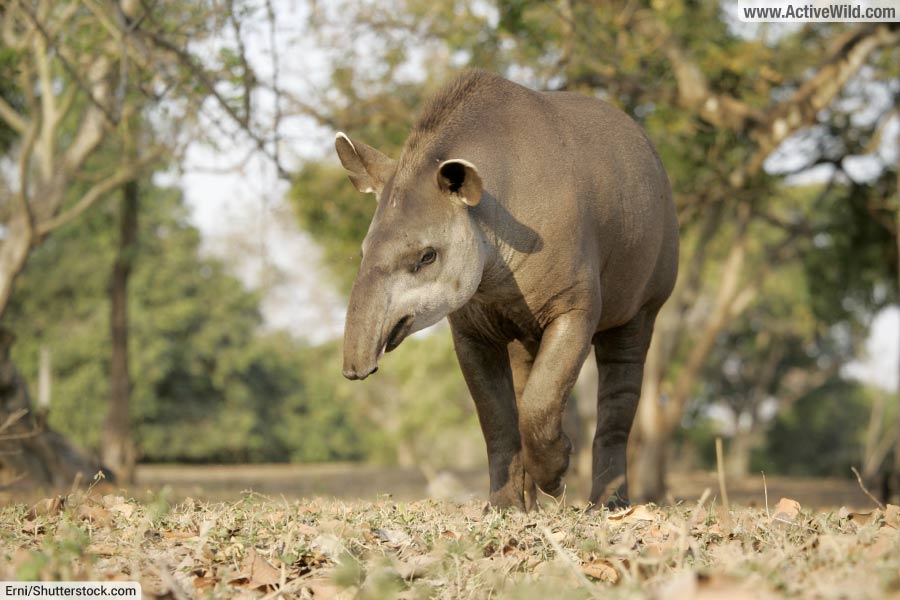
Within the Tapiridae family, there exist four distinct species, namely the South American tapir, mountain tapir, Baird’s tapir, and the Malayan tapir. While the first three species can be found in South America, the Malayan tapir inhabits Southeast Asia.
The South American tapir, also known as the lowland tapir or Brazilian tapir, stands as the solitary tapir species residing within the vast expanse of the Amazon rainforest. Remarkably, it holds the title of being the largest land mammal found in this region.
Tapirs possess robust bodies and possess remarkable noses with a unique ability to grasp and manipulate food as well as other objects, owing to their mini-trunk-like structure.
Unfortunately, tapirs face significant threats in the form of deforestation and hunting.
Toucan
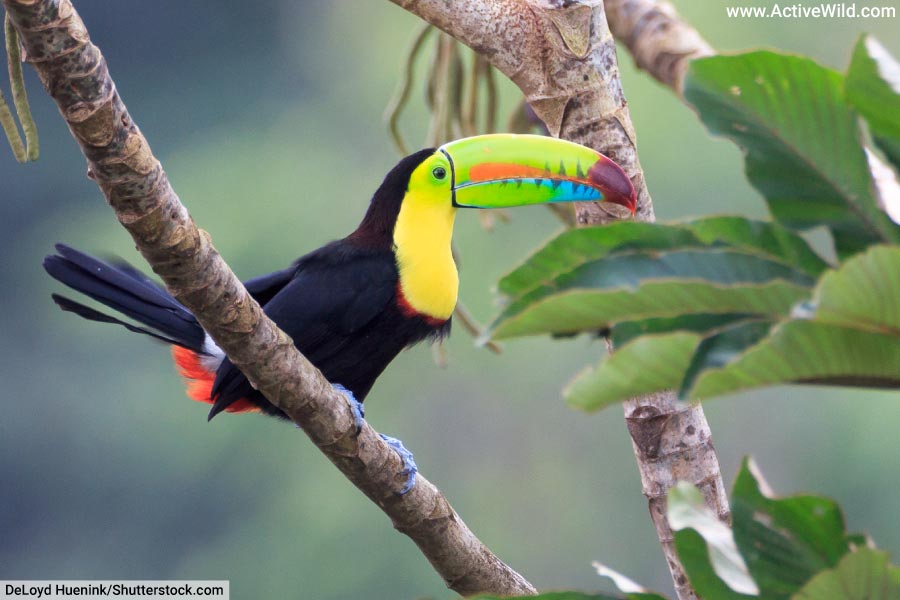
Birds belonging to the family Ramphastidae, known as toucans, possess remarkable characteristics that set them apart. These avian creatures are recognized for their vibrant plumage and notably large, colorful bills. While the typical toucans like the toco toucan and keel-billed toucan are widely known, the family Ramphastidae also includes toucanets and aracaris, encompassing a total of 43 distinct toucan species.
One of the most striking features of toucans is their unique bill, which serves a variety of purposes. Despite its formidable appearance, the toucan’s bill is surprisingly lightweight, leading scientists to hypothesize that its primary function may be related to temperature regulation. Moreover, the elongated shape of the bill enables the toucan to effortlessly access food without the need for excessive movement, thus conserving energy.
Among the toucan species, the toco toucan holds the distinction of being the largest. Another notable member of this avian family is the keel-billed toucan, whose natural habitat encompasses the tropical rainforests of Central and South America.
Vicuña
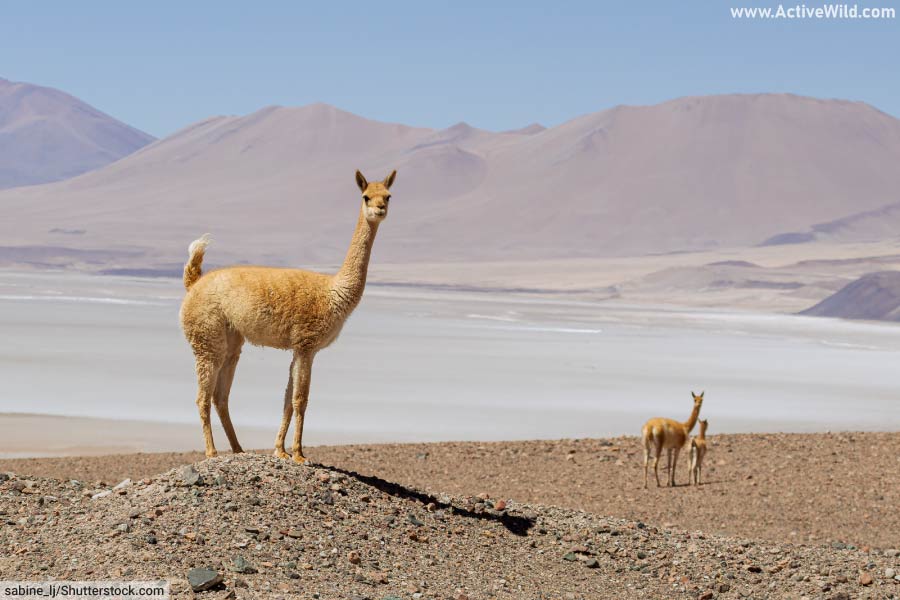
The vicuña, a mammal with hooves, is indigenous to South America. It belongs to the Camelidae family, which includes domesticated animals like alpacas and llamas.
In South America, the guanaco is the only other wild member of the camel family.
The vicuña is considered the untamed ancestor of the closely related alpaca, which humans started domesticating over 2,000 years ago.
Thriving in high-altitude regions of the Andes, the vicuña can be found in Argentina, Bolivia, Chile, Ecuador, and Peru. Its wool holds great value, and the alpaca, descended from this species, was selectively bred for its prized fleece. In Peru, the vicuña is the national animal.
During the 1970s, the vicuña faced endangerment due to excessive hunting, with its population plummeting to around 6,000 individuals.
Since then, the species has made a remarkable recovery, marking a triumph for conservation efforts. Presently, the vicuña is classified as “Least Concern,” with approximately 350,000 adult individuals.
